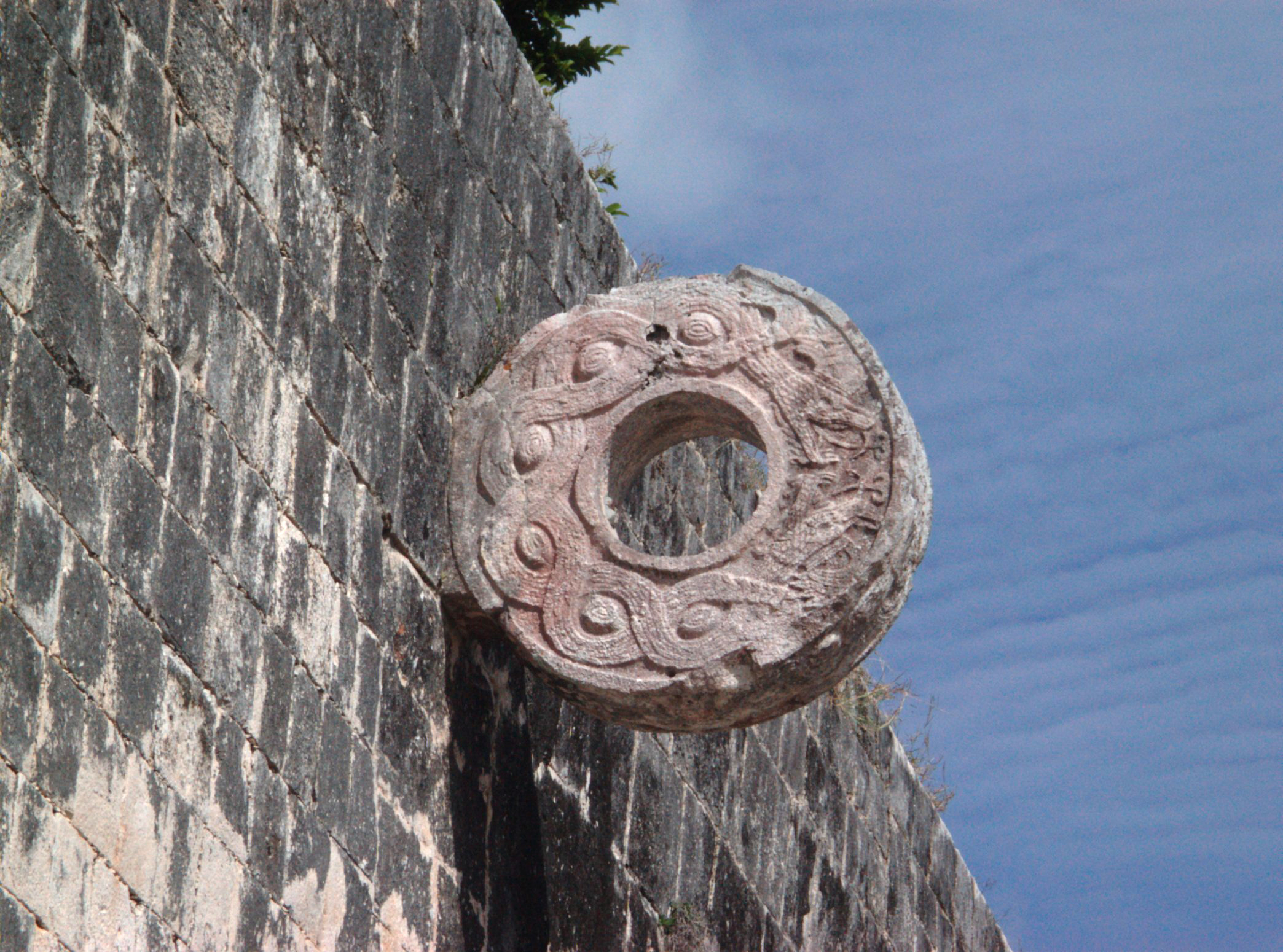 |
| Great Ball Court of Chicen Itza |
The Mayans practiced sport and build huge ballcourts to play games. The Great Ballcourt of Chichen Itza is the most impressive measuring 166 by 68 meters (545 by 232 feet). It has no vault, no discontinuity between the 12 meters high walls and is open to the blue sky. In the center, high up on each of the long walls, are stone rings carved with intertwining serpents.
At the base of the high interior walls are benches with sculpted panels of teams of ball players. In one panel, one of the players has been decapitated and from the wound emits seven streams of blood; six become wriggling serpents and the center becomes a winding plant.
Built into the east wall are the Temples of the Jaguar. The Upper Temple of the Jaguar overlooks the ball court and has an entrance guarded by two, large columns carved in the familiar feathered serpent motif. Inside there is a large mural, much destroyed, which depicts a battle scene.
 |
| The winning team was the one who managed to launch the ball throughout this stone ring |
In the entrance to the Lower Temple of the Jaguar, which opens behind the ball court, is another jaguar throne, similar to the one in the inner temple of El Castillo, except that it is well worn and missing paint or other decoration. The outer columns and the walls inside the temple are covered with elaborate bas-relief carvings.
A whisper from end can be heard clearly enough at the other end 500 feet far away and through the length and breath of the court.
The sound waves are unaffected by wind direction or time of day and also night. Archaeologists engaged in the reconstruction noted that the sound transmission became more and more strong and clear as they proceeded.
In 1931 Leopold Stokowski spent 4 days at this site to determine the acoustic principals that could be applied to theater for an open-air concert he was designing. Stokowski failed to learn the secret.
Today it has not been explained.
It is easy to imagine a Mayan King sitting here presiding over the games. Legends say that the winning Capitan would present his own head to the losing Capitan, who then decapitates him. While this may seem very strange reward, the Mayans believed that this to be the ultimate honor.
The winning Capitan getting a direct ticket for heaven instead of going through the 13 high steps that the Mayan's believed they had to go through in order to reach peaceful heaven..
A whisper from end can be heard clearly enough at the other end 500 feet far away and through the length and breath of the court.
The sound waves are unaffected by wind direction or time of day and also night. Archaeologists engaged in the reconstruction noted that the sound transmission became more and more strong and clear as they proceeded.
In 1931 Leopold Stokowski spent 4 days at this site to determine the acoustic principals that could be applied to theater for an open-air concert he was designing. Stokowski failed to learn the secret.
Today it has not been explained.
It is easy to imagine a Mayan King sitting here presiding over the games. Legends say that the winning Capitan would present his own head to the losing Capitan, who then decapitates him. While this may seem very strange reward, the Mayans believed that this to be the ultimate honor.
The winning Capitan getting a direct ticket for heaven instead of going through the 13 high steps that the Mayan's believed they had to go through in order to reach peaceful heaven..